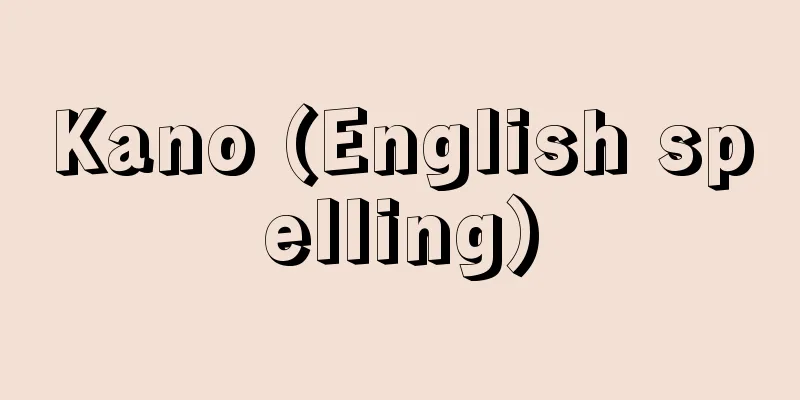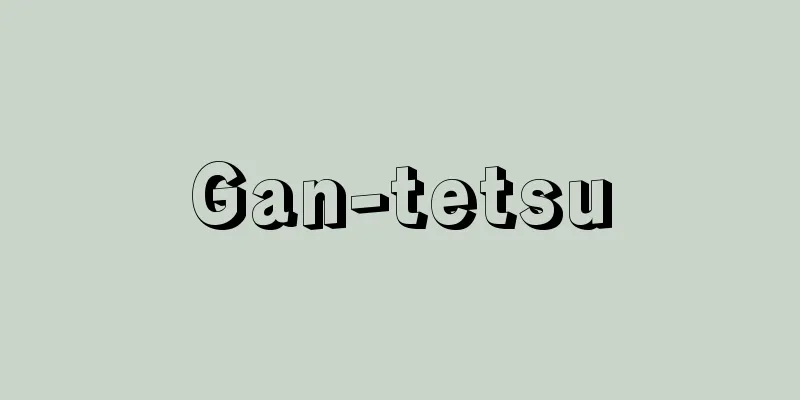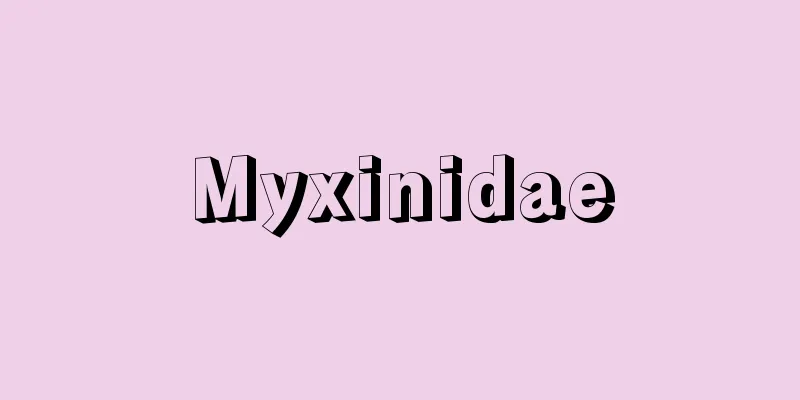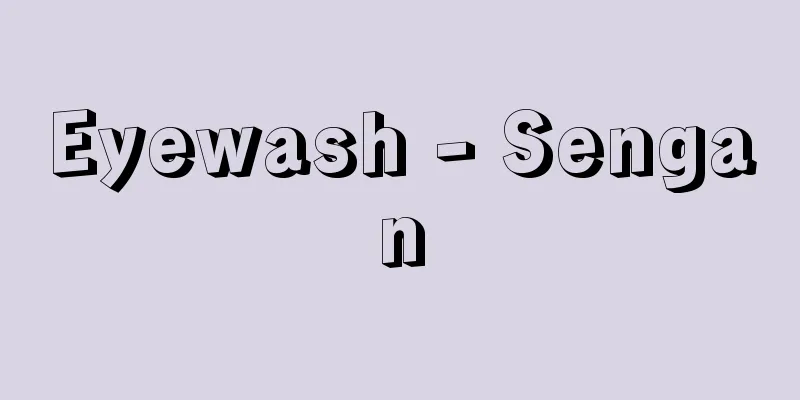Civil litigation - Minjisosho
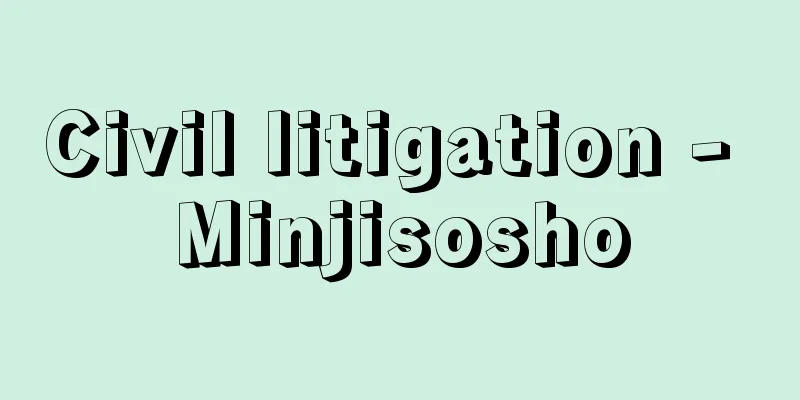
|
It is a procedure or system whereby a court established by the state exercises judicial power to legally and compulsorily resolve disputes over rights or legal relationships between private individuals. It is distinguished from criminal litigation and administrative litigation in that it deals with disputes between private individuals (civil cases), but since administrative litigation is now usually under the jurisdiction of the courts (Article 76 of the Constitution, Article 3 of the Courts Act), formally it can also be said to be a part of civil litigation. In addition to civil litigation, there are also mediation, arbitration, and settlement (conciliation) as systems for resolving private disputes, but these differ from civil litigation in that they lack a compulsory element or are not an exercise of state judicial power. As will be explained later, the core of civil litigation is the adjudication procedure, which aims to conceptually determine the relationship of rights through a trial, and the compulsory execution procedure, which aims to practically satisfy rights. However, with regard to the compulsory execution procedure, the Civil Execution Act was enacted in 1979 (Showa 54) separately from the Civil Procedure Act, and most of the provisions previously stipulated in "Civil Procedure Act Part 6 Compulsory Execution" were integrated into the Civil Execution Act along with the provisions of the old Auction Act. Both procedures are procedures established by the state to realize the rights of private individuals, and since the two procedures are often combined to achieve their purpose, they are closely related to each other. Other civil litigation procedures include bill litigation and check litigation (Civil Procedure Act Articles 350 and following) and collection procedures (Civil Procedure Act Articles 382 and following). Provisional attachment and provisional disposition procedures were stipulated separately in the Civil Procedure Code and the Civil Execution Code before the Civil Preservation Act (Act No. 91 of 1989) was enacted, but after its enactment they were integrated into the Civil Preservation Act. In addition, procedures stipulated as non-contentious cases include public notice procedures (Non-Contentious Cases Procedure Act), bankruptcy procedures (Bankruptcy Act), and personal status litigation procedures (Personal Status Litigation Act). [Takeyoshi Uchida and Tetsuo Kato, May 19, 2016] Judgment proceedingsThe procedure for resolving disputes between parties (plaintiff and defendant) through a judgment is called a judgment procedure, in which the principle of private autonomy applies (party principle) and is initiated by the filing of a lawsuit by the parties. A lawsuit is usually filed with the district court of jurisdiction, but claims for amounts not exceeding 1.4 million yen are handled by summary courts, and oral petitions can also be filed. A judgment based on a lawsuit is called a judgment, and as the legal proverb "no lawsuit, no trial" indicates, the court must only rule on matters that have been claimed (Article 246 of the Civil Procedure Act), and must not rule on cases that have not been actively claimed or on matters that are beyond the scope of the lawsuit. This is called the principle of dispositional power. A judgment is a legal judgment by the state (court) on a case, so in order to make a judgment, the facts to which the law should be applied must first be clarified. Therefore, the parties must assert the facts that should be the basis of the judgment, and for facts that are disputed between the parties, evidence must be submitted to prove those facts. In other words, in civil lawsuits, the parties must take the lead in submitting the facts and evidence necessary for the judgment to the court. This is called the oral argument system. In accordance with the provisions of the Civil Procedure Law, the assertion of facts and the presentation of evidence are all done orally, and this procedure is called oral argument (Articles 87, 148 and following). The court makes a judgment based on the facts asserted by the parties in this oral argument, but if there is a dispute over the facts asserted by the parties, the truth of the facts will be determined based on the evidence submitted by the parties. In other words, facts that are not disputed between the parties are used as the basis for the judgment as they are (Article 179 of the same law), except for matters that should be investigated by the court's own authority, and the truth of disputed facts is determined based on evidence, and only the facts that are found to be true are used as the basis for the judgment. In this case, the determination of facts based on evidence is left to the judge's personal judgment based on the so-called free judgment principle (Article 247 of the same law). The facts of the case are clarified in the above manner, and the judge applies the law to the facts he has found and makes a judgment. The application of this law requires a decision as to what law should be applied and an interpretation of that law, which is the responsibility of the court, as stated in the legal proverb Jura novit curia (Latin), meaning "the court knows the law." The parties are not responsible for indicating to the judge which law should be applied, and the judge is not bound by the parties' legal arguments. As mentioned above, the process of adjudication is divided into two stages: the determination of facts and the application of law. The application of law is the responsibility of the court, but the parties are responsible for submitting the facts and evidence necessary for the adjudication. Therefore, if a party does not submit facts and evidence in his/her favor, he/she may lose a lawsuit that he/she should win. Therefore, it should be noted that the private law principle that "he who sleeps on his/her rights shall not protect them" is also applied to civil lawsuits. In this case, the court's decision on the validity of the parties' claims in the lawsuit is called a judgment on the merits, which includes a judgment granting the claim in favor of the plaintiff and a judgment dismissing the claim in favor of the defendant. There are three types of judgments on the merits in favor of the plaintiff: a judgment for performance, a judgment for confirmation, and a judgment for formative purposes. When the plaintiff loses, the judgment is a judgment for confirmation in the sense that the rights or legal relationship asserted by the plaintiff do not exist. In addition, when the procedure or form of the lawsuit is defective, the court will make a judgment to dismiss the lawsuit without making a judgment on the validity of the claims in the lawsuit. This is what is called a rejection at the door, and this type of judgment is called a lawsuit judgment. [Takeyoshi Uchida and Tetsuo Kato, May 19, 2016] Appeal and review proceduresNext, civil litigation has an appeal system in place as a way of filing an appeal to a higher court in order to seek a more favorable judgment against an unfinalized judgment. In other words, a party who loses a final judgment in the first instance can appeal, and the case will be transferred to the appellate court, which will resume the proceedings and make a new judgment on the facts and points of law. Furthermore, if there is an objection to the judgment of the appellate court, an appeal can be made, but since the appellate court is a legal court, it only examines whether the original judgment violates the law and cannot raise any factual issues. In addition to the appeal system, a suit for retrial is also permitted in cases where a final and final judgment has been made, if there are certain grounds (Article 338, Paragraph 1 of the Code of Civil Procedure). [Takeyoshi Uchida and Tetsuo Kato, May 19, 2016] Compulsory execution proceedingsWhen a judgment orders one party to perform a performance (act or non-act), if that party does not perform the performance voluntarily, it is necessary to enforce the performance by the state power. This procedure is called compulsory execution. As mentioned above, there is currently a provision in the Civil Execution Act regarding this. Compulsory execution is a secondary right protection litigation procedure that exists to realize the content of the judgment. In principle, in addition to the judgment institution, an enforcement officer is appointed as the institution in charge of compulsory execution. The Civil Execution Act also stipulates the debt instrument and other requirements for compulsory execution, and when an application for execution that meets these requirements is made, the enforcement institution should naturally start the compulsory execution procedure. In other words, the judgment institution is not supposed to be involved in compulsory execution, and the enforcement institution is not given the authority to judge whether or not there is a right to be executed. Since the enforcement institution does not have the substantive power of review, it is not certain that unjust compulsory execution will not occur. For this reason, the Civil Execution Act provides for various ways to file objections and lawsuits (Articles 32, 34, 35, 38, etc.). In addition, the enforcement of security rights, which was provided for in the old Auction Law, is also provided for in the Civil Execution Law (Article 180 et seq. of the same Law), as it is a method of realizing rights. [Takeyoshi Uchida and Tetsuo Kato, May 19, 2016] Collection proceduresFor claims aimed at the payment of a certain amount of money or other substitutes or securities, a demand for payment is issued based on the creditor's application without questioning the debtor, and if the debtor does not file an objection, a declaration of provisional execution is attached and compulsory execution is allowed. This is a substitute procedure for a lawsuit for payment, called a demand procedure. However, if the debtor files an objection, the case will be transferred to regular litigation procedures and adjudicated (Civil Procedure Act, Articles 382 to 396). [Takeyoshi Uchida and Tetsuo Kato, May 19, 2016] Bill and cheque proceedingsAs the economy developed, the circulation of bills and checks increased dramatically, and out of the need for the prompt realization of these types of claims, this system was established in 1964 (Showa 39), and has been carried over to the current Civil Procedure Code (Article 350 et seq.). In bill lawsuits, claims can be made for payment of money by bill and damages at the statutory interest rate attached thereto. In these lawsuits, the defendant is prohibited from making counterclaims, and evidence is generally limited to documentary evidence (Articles 350 to 366). These features are also applied mutatis mutandis to check lawsuits (Article 367). [Takeyoshi Uchida and Tetsuo Kato, May 19, 2016] Provisional attachment and provisional disposition proceedingsIt refers to the procedure for deciding whether or not to allow measures to preserve the status quo for future compulsory execution, and as mentioned above, these are stipulated in the Civil Preservation Act. Provisional measures are also allowed in cases where the court prescribes emergency interim measures in cases where leaving the status quo until the resolution of the dispute would cause significant danger or anxiety to the parties, or would result in the defeat of the purpose of resolution (provisional measures prescribing a provisional status). Orders for provisional attachment and provisional measures (civil preservation) are issued by the court upon petition, and are executed by the court or a bailiff (Civil Preservation Act, Article 2). Furthermore, trials regarding civil preservation procedures may be held without oral argument (Civil Preservation Act, Article 3). [Takeyoshi Uchida and Tetsuo Kato, May 19, 2016] Public notice procedureIt is a procedure in which, upon the application of a person who is unable to exercise his/her rights because it is unknown whether there will be anyone who will raise an objection, the court issues a public notice and sets a period for the application, forfeits the rights of those who do not raise an objection, and issues a decision to remove the rights so that the applicant can freely exercise his/her rights. In addition, in the case of theft, loss, or destruction of securities, there is a procedure to issue a decision to remove the rights to invalidate those securities (Non-Contentious Cases Procedure Act, Article 99 and following). [Takeyoshi Uchida and Tetsuo Kato, May 19, 2016] Bankruptcy proceedingsThe above-mentioned compulsory execution procedure is an individual execution procedure carried out against each of the debtor's assets for specific creditors. In contrast, a comprehensive execution procedure carried out against all of the debtor's (bankrupt) assets for all creditors (bankruptcy creditors) is called a bankruptcy procedure. In bankruptcy procedures, the debtor's (bankrupt) assets are managed and liquidated, and the liquidated proceeds are distributed to creditors, so it is a type of execution procedure. However, since it is a comprehensive execution procedure carried out against the debtor's total assets for all creditors, it is different from individual compulsory execution procedures, so an independent bankruptcy code has been established as a separate legal system. In other words, in bankruptcy procedures, claims are investigated for the bankruptcy creditors, and the claims are determined under limited conditions, so to that extent it also has the characteristics of a judgment procedure. [Takeyoshi Uchida and Tetsuo Kato, May 19, 2016] Personal status litigation proceedingsBasic status relationships such as marriage and parent-child relationships are also the basis for status relationships between other people, but if the dispute is resolved only between the parties in a relative manner, such as a dispute over property interests, the status order may become confused. Therefore, it is necessary to take into account the relationship with third parties and handle the matter as uniformly as possible, and since the effect of the judgment is to be applied to the world as a whole, this procedure is characterized by excluding the principle of oral argument and adopting the principle of official discovery, which is different from normal procedures. [Takeyoshi Uchida and Tetsuo Kato, May 19, 2016] [Reference items] | | | | | | | | | | | | | | | | | | | | | | | | | | | | | | | oral | | | |Source: Shogakukan Encyclopedia Nipponica About Encyclopedia Nipponica Information | Legend |
|
私人間の権利または法律関係についての争いを、国家の設営する裁判所が裁判権の行使によって法律的かつ強制的に解決するための手続ないし制度をいう。私人間の争い(民事事件)を対象とする点において、刑事訴訟や行政訴訟と区別されるが、現在の行政訴訟は通常裁判所の管轄に属することになったので(憲法76条、裁判所法3条)、形式的にはこれも民事訴訟に属するといえる。私的紛争の解決制度としては、民事訴訟のほかに調停、仲裁、和解(示談)などもあるが、強制的要素に欠けていたり、あるいは国家裁判権の行使でない点で、民事訴訟とは異なる。 民事訴訟の中心をなすものは、のちに述べるように、裁判によって権利関係の観念的な確定を図る判決手続と、権利の現実的満足を図る強制執行手続である。ただし、強制執行手続に関しては、「民事訴訟法」とは別個に1979年(昭和54)「民事執行法」が制定されたので、従来、「民事訴訟法第6編強制執行」として規定されていた大部分の規定が、旧競売法の規定とともに民事執行法に統合された。両手続は、いずれも私人の権利実現のために国家が設営する手続であり、両手続が一本化して目的を達する場合が多いから、相互に密接な関係にある。民事訴訟にはほかに手形訴訟・小切手訴訟(民事訴訟法350条以下)、督促手続(同法382条以下)などがある。仮差押え・仮処分訴訟手続は、「民事保全法」(平成1年法律第91号)が制定されるまでは民事訴訟法と民事執行法に分かれて規定されていたが、制定後は民事保全として統合された。また、非訟事件の一つとして規定されているものとして公示催告手続(非訟事件手続法)、破産手続(破産法)、人事訴訟手続(人事訴訟法)などの諸手続がある。 [内田武吉・加藤哲夫 2016年5月19日] 判決手続判決によって当事者(原告・被告)間の紛争を解決する手続を判決手続といい、ここでは私的自治の原則が妥当し(当事者主義)、当事者の訴えの提起によって開始される。訴えは、通常の事件は管轄の地方裁判所に訴状を提出して行うが、訴額が140万円を超えない請求の場合は簡易裁判所で取り扱っており、口頭で申立てをすることもできる。訴えに基づいてなす裁判を判決といい、「訴えなければ裁判なし」との法諺(ほうげん)が示すように、裁判所は訴えのあった事項だけについて判決し(民事訴訟法246条)、積極的に訴えのない事件、また訴えの範囲を超えた事項については判決してはならないことになっている。これを処分権主義という。判決は、事件に対する国家(裁判所)の法的判断であるから、判決をなすには、まず法律を適用すべき事実関係を明確にしなければならない。そこで、判決の基本とすべき事実は当事者が主張し、また当事者間に争いのある事実については、その事実を証明すべき証拠を提出する必要がある。つまり民事訴訟においては、当事者が中心となって判決に必要な事実と証拠を裁判所に提出することが原則となっている。これを弁論主義という。そしてその事実の主張および証拠の提出は、民事訴訟法の規定に従ってすべて口頭でなすものとしており、その手続を口頭弁論という(同法87条、148条以下)。裁判所は、この口頭弁論において当事者が主張した事実に基づいて判決するのであるが、当事者が主張した事実に争いがあれば、当事者の提出した証拠によりその真偽を判断することになる。すなわち、当事者間に争いのない事実は、職権で調査すべき事項を除いて、そのまま真実として判決の基礎とされ(同法179条)、争いのある事実は証拠によってその真偽を判断し、真実と認定した事実だけを判決の基礎とする。この場合に、証拠による事実の認定は、いわゆる自由心証主義によって裁判官の全人格的判断に任される(同法247条)。事件の事実関係は以上のような方法で明確にされ、裁判官はその認定した事実に法律を適用して判決する。この法律の適用には、どんな法律を適用すべきかという決定と、その法律の解釈が必要であって、これは「裁判所は法律を知る」Jura novit curia(ラテン語)という法諺のように裁判所の責任とされ、当事者は適用されるべき法律を裁判官に示す責任はないし、また裁判官は当事者の法律上の主張には拘束されない。 以上述べてきたように判決の過程は、事実の認定と法律の適用の2段階に分かれている。そして法律の適用は裁判所の責任とされているが、判決に必要な事実および証拠を提出する責任は当事者にあるわけである。したがって当事者が自分に有利な事実および証拠を提出しない場合には、勝つべき訴訟にも敗訴することもありうる。そこで「権利のうえに眠る者は、これを保護しない」という私法上の原則は、民事訴訟にも置かれていることに留意すべきである。そしてこの場合、当事者の訴訟上の請求の当否についての裁判所の判断を本案判決といい、これには原告勝訴の請求認容と被告勝訴の請求棄却の判決がある。そして、原告勝訴の本案判決には、さらに給付判決、確認判決、形成判決の3種があり、原告敗訴のときは原告が主張する権利または法律関係が存在しないという意味での確認判決となる。なお、訴えの手続や形式が不備であるようなときは、訴訟上の請求の当否の判断に入らずに訴え却下の判決をする。これはいわゆる門前払いであって、この種の判決を訴訟判決という。 [内田武吉・加藤哲夫 2016年5月19日] 上訴・再審手続次に民事訴訟は、未確定の裁判に対し、さらに有利な裁判を求めるために、上級裁判所に対してなす不服申立ての方法として、上訴制度を設けている。すなわち、第一審の終局判決に対して敗訴した当事者は控訴ができ、これによって事件は控訴裁判所に移り、控訴審では審理を再開続行して、改めて事実点・法律点について判決する。さらに控訴審の判決に対して不服があれば上告できるが、上告審は法律審であるから、もっぱら原審判決が法令に違反するか否かについて審査するだけで、事実問題は持ち出せないことになっている。なお上訴制度のほか、確定の終局判決のあった事件につき、一定の事由(民事訴訟法338条1項)があれば、再審の訴えも認められている。 [内田武吉・加藤哲夫 2016年5月19日] 強制執行手続判決が一方の当事者に給付(行為・不行為)を命じた場合に、その当事者が自発的に給付をしないときは、国家権力によってその給付を強制する必要がある。その手続を強制執行という。これに関しては前記のように、現在は民事執行法の規定がある。強制執行は、判決の内容実現のためにある第二次的権利保護の訴訟手続である。強制執行を担当する機関としては、原則として判決機関のほかに執行官が設置されている。そして民事執行法は、債務名義、その他の強制執行の要件を定めて、それらの要件を具備した執行の申立てがあった場合には、執行機関は当然に強制執行手続を開始すべきものとしている。つまり判決機関は、強制執行の衝にあたらないのがたてまえであり、また執行機関には、執行すべき権利の存否についての判断をする権限が与えられていない。このように執行機関には、実体的審査権がないから、不当な強制執行が行われることがないとは限らない。そのために民事執行法には、各種の異議の申立ておよび訴えを提起する道が設けられている(同法32条、34条、35条、38条など)。なお、旧競売法に規定されていた担保権の実行なども、権利実現の方法であるところから、民事執行法に定めている(同法180条以下)。 [内田武吉・加藤哲夫 2016年5月19日] 督促手続金銭その他代替物または有価証券の一定の数量の給付を目的とする請求について、債権者の申立てに基づき、債務者を審尋しないで、これに支払督促を発し、債務者から異議の申立てがなければ、さらに仮執行宣言を付して強制執行ができるようにする給付訴訟の代用手続を督促手続という。もっとも、債務者から異議の申立てがあると、通常の訴訟手続に移行して審判されることになる(民事訴訟法382条~396条)。 [内田武吉・加藤哲夫 2016年5月19日] 手形・小切手訴訟手続経済の発展に伴い手形・小切手の流通が激増したため、この種の請求権の迅速な実現の必要から、1964年(昭和39)に新設された制度であり、現行民事訴訟法に受け継がれている(同法350条以下)。手形訴訟で請求できるのは、手形による金銭の支払いおよびこれに付帯する法定利率による損害賠償の請求である。この訴訟においては、被告による反訴は禁止されており、証拠は原則として書証に限られる(同法350条~366条)。これらの特色は、小切手訴訟にも準用されている(同法367条)。 [内田武吉・加藤哲夫 2016年5月19日] 仮差押え・仮処分訴訟手続将来の強制執行のため現状を保全する処置を許すか否かを裁判する手続をいい、これらは前記のように民事保全法で規定されている。仮処分は、これ以外にも、紛争の解決まで現状を放置すると当事者に著しい危険・不安を生じ、あるいは解決の目的を失わせるような結果となるおそれのある場合に、裁判で応急の暫定的処置を定める場合にも認められる(仮の地位を定める仮処分)。仮差押え・仮処分(民事保全)の命令は申立てにより裁判所が行い、執行は裁判所または執行官が行う(民事保全法2条)。また民事保全の手続に関する裁判は、口頭弁論を経ないですることができる(同法3条)。 [内田武吉・加藤哲夫 2016年5月19日] 公示催告手続異議を申し出る者があるかどうかがわからないため権利行使ができないでいる者の申立てによって、裁判所が公告をして期間を定めその申し出を催告し、その申し出をしない者を失権させて、申立人の権利行使を自由にするための除権決定をする手続をいう。また、有価証券の盗取、紛失、滅失の場合に、それら有価証券を無効にする除権決定をするための手続がある(非訟事件手続法99条以下)。 [内田武吉・加藤哲夫 2016年5月19日] 破産手続前記した強制執行手続は、特定債権者のために、債務者の個々の財産に対してなす個別的執行手続である。これに対して債務者(破産者)の全財産に対し、総債権者(破産債権者)のためになす包括的執行手続を破産手続という。破産手続においては、債務者(破産者)の財産の管理・換価および債権者に対する換価金の配当が行われるのであるから、一種の執行手続である。しかしそれは債務者の総財産に対し、総債権者のために行う包括的執行手続である点において、個別的な強制執行手続とは異なるので、独立した破産法典を設けて、別な法律制度としている。すなわち、破産手続においては、破産債権者のため、債権を調査し、限定した条件のもとにその債権が確定されるのであるから、その限りにおいて判決手続の性格をも有している。 [内田武吉・加藤哲夫 2016年5月19日] 人事訴訟手続婚姻・親子などの基本的身分関係は、他人間の身分関係の基礎にもなるわけであるが、財産的利益の紛争のように相対的に当事者間で解決するだけでは、身分的秩序が混乱することがありうる。そこで第三者との関係をも考慮して、できるだけ画一的に取り扱う必要性があり、判決の効力を対世的に及ぼすことにする関係から、通常の手続と異なり、弁論主義を排して職権探知主義をとっている点に特色がある。 [内田武吉・加藤哲夫 2016年5月19日] [参照項目] | | | | | | | | | | | | | | | | | | | | | | | | | | | | | | | | | | |出典 小学館 日本大百科全書(ニッポニカ)日本大百科全書(ニッポニカ)について 情報 | 凡例 |
Recommend
Vernalization - vernalization
It is believed that for annual plants to germinate...
Jerome
...Bible scholar and saint. English name Jerome. ...
Ozobranchus margoi (English spelling) Ozobranchusmargoi
… [Minoru Imajima]. … *Some of the terminology th...
Ouyang Xiu
A Chinese literary figure from the Song dynasty. ...
Pantanal (English spelling)
A large marshland stretching from the southern par...
Light clothing - Karusan
A type of hakama with a wide body and narrow hem. ...
Facial angle
An angle that indicates the degree of protrusion ...
Prince Katsurahara
Year of death: 4th June 853 (13th July 853) Year o...
Asahi Bunzaemon
…Ukamuse was the most widely known restaurant in ...
Keemun tea - Kimoncha
…Today, the word tea in English usually means bla...
Oreol - Oreol
…As a special example, square halos were used in ...
company union
...Article 2 of the Japanese Labor Union Law excl...
Nemuro [city] - Nemuro
The city occupies the Nemuro Peninsula at the east...
Aman
...The main intelligence agencies of Israel are M...
Beauty herb - bijin kousou (English spelling) měi rén xiāng cǎo
Rhetoric in the ancient Chinese song and song, Chu...
